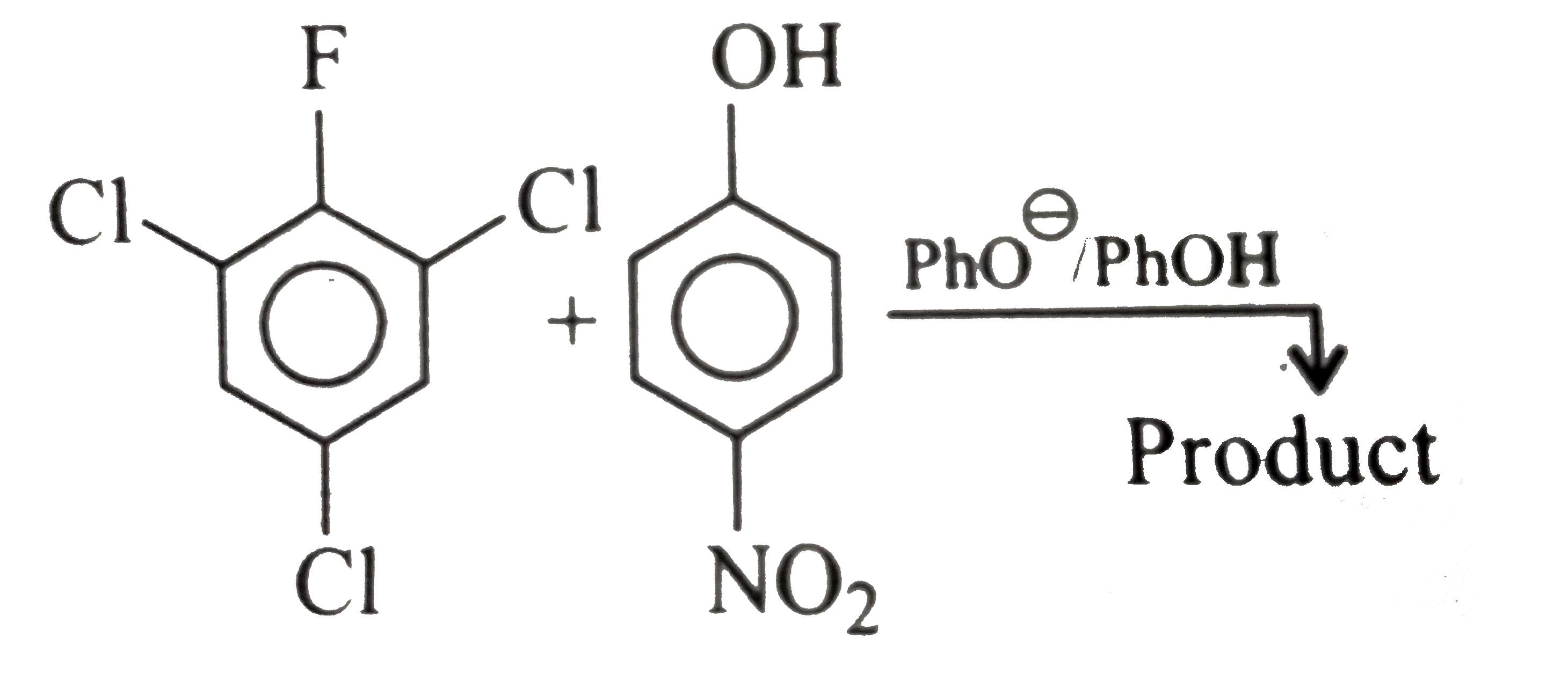Assertion (A): Sodium perxenate (Na4XeO6) reacts with NaF in acidic medium to give XeO3 and F2
Reason (R ): XeO4−6 is a stronger oxidant than F2.
If both (A) and (R) are correct and (R) is the correct explanation of (A).
If both (A) and (R) are correct but (R) is not the correct explanation of (A).
If (A) is correct but (R) is incorrect.
If (A) and (R) are incorrect.
The correct Answer is:A
To solve the question, we need to analyze both the assertion and the reason provided.
Step 1: Analyze the Assertion
The assertion states that sodium perxenate (Na4XeO6) reacts with NaF in an acidic medium to produce XeO3 and F2.
1. Chemical Reaction:
The reaction can be represented as:
\(
XeO_6^{4-} + 2F^- + 6H^+ \rightarrow XeO_3 + F_2 + 3H_2O
\)
Step 2: Analyze the Oxidation States
Next, we need to determine the oxidation states of xenon and fluorine in the reaction:
1. Oxidation State of Xenon:
- In XeO64−, the oxidation state of Xe can be calculated as follows:
\(
x + 6(-2) = -4 \implies x - 12 = -4 \implies x = +8
\)
- In XeO3, the oxidation state of Xe is:
\(
x + 3(-2) = 0 \implies x - 6 = 0 \implies x = +6
\)
2. Oxidation State of Fluorine:
- In F−, the oxidation state is -1.
- In F2, the oxidation state is 0.
Step 3: Determine Oxidation and Reduction
Now, we can identify which species is oxidized and which is reduced:
1. Reduction:
- Xenon is reduced from +8 in XeO64− to +6 in XeO3.
2. Oxidation:
- Fluorine is oxidized from -1 in F− to 0 in F2.
Step 4: Compare Oxidizing Strength
The reason states that XeO64− is a stronger oxidant than F2.
1. Conclusion:
- Since XeO64− is reduced (gaining electrons) and F− is oxidized (losing electrons), it confirms that XeO64− acts as a stronger oxidizing agent than F2.
Final Conclusion
Both the assertion and the reason are correct, and the reason correctly explains the assertion.
Answer:
Both the assertion and reason are correct, and the reason is the correct explanation of the assertion.
The assertion states that sodium perxenate (Na4XeO6) reacts with NaF in an acidic medium to produce XeO3 and F2.
The reaction can be represented as:
\(
XeO_6^{4-} + 2F^- + 6H^+ \rightarrow XeO_3 + F_2 + 3H_2O
\)
Next, we need to determine the oxidation states of xenon and fluorine in the reaction:
- In XeO64−, the oxidation state of Xe can be calculated as follows:
\(
x + 6(-2) = -4 \implies x - 12 = -4 \implies x = +8
\)
- In XeO3, the oxidation state of Xe is:
\(
x + 3(-2) = 0 \implies x - 6 = 0 \implies x = +6
\)
- In F−, the oxidation state is -1.
- In F2, the oxidation state is 0.
Now, we can identify which species is oxidized and which is reduced:
- Xenon is reduced from +8 in XeO64− to +6 in XeO3.
2. Oxidation:
- Fluorine is oxidized from -1 in F− to 0 in F2.
The reason states that XeO64− is a stronger oxidant than F2.
- Since XeO64− is reduced (gaining electrons) and F− is oxidized (losing electrons), it confirms that XeO64− acts as a stronger oxidizing agent than F2.
Both the assertion and the reason are correct, and the reason correctly explains the assertion.
Both the assertion and reason are correct, and the reason is the correct explanation of the assertion.
Topper's Solved these Questions
- BOOK - CENGAGE CHEMISTRY ENGLISHCHAPTER - REDOX REACTIONSEXERCISE - Exercises (Integers)11videos
REDOX REACTIONS
- BOOK - CENGAGE CHEMISTRY ENGLISHCHAPTER - REDOX REACTIONSEXERCISE - Archives (Single Correct )16videos
REDOX REACTIONS
- BOOK - CENGAGE CHEMISTRY ENGLISHCHAPTER - REDOX REACTIONSEXERCISE - Exercises (Single Correct)91videos
REDOX REACTIONS
- BOOK - CENGAGE CHEMISTRY ENGLISHCHAPTER - PURIFICATION OF ORGANIC COMPOUNDS AND QUALITATIVE AND QUANTITATIVE ANALYSISEXERCISE - Assertion Reasoning Type5videos
PURIFICATION OF ORGANIC COMPOUNDS AND QUALITATIVE AND QUANTITATIVE ANALYSIS
- BOOK - CENGAGE CHEMISTRY ENGLISHCHAPTER - S-BLOCK GROUP 1 - ALKALI METALSEXERCISE - Archives Subjective8videos
S-BLOCK GROUP 1 - ALKALI METALS
Similar Questions
Assertion (A):

The product is:
Reason (R ): p−NO2−C6H4O− is a stronger nucleophile than PhO−.View SolutionAssertion (A): Sodium reacts with oxygen to form Na2O2 whereas potassium reacts with oxygen to form KO2.
Reason (R ): Potassium is more reactive than sodium.View SolutionIn case of XeO2F2 and XeF6 , Xe is with
View SolutionAssertion (A):O2 is stronger reducing agent than F2
Reason (R ): F2 is more electronegative.View SolutionThe number of peroxide bonds in perxenate ion [XeO6]4− is
View SolutionXeF4+H2O→Xe+XeO3+HF+O2
View SolutionXeF4+H2O→Xe+XeO3+HF+O2
View SolutionAssertion (A): H2SO4 acts as a base in the presence of HCIO4.
Reason (R) : Perchloride acid is stronger acid than H2SO4.View SolutionAssertion (A): CIF is more reactive than F2.
Reason (R ): The F-F bons is weaker than CIF bond.View SolutionThe oxidation number of S in Na2S4O6 is
View Solution
